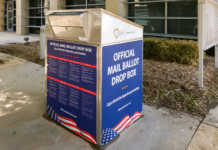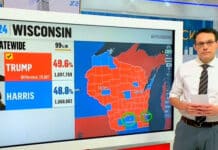(Center of the American Experiment) — Election judges perform a vital, if often overlooked, oversight role in ensuring the integrity of elections. The Minnesota Secretary of State estimates up to 30,000 citizens volunteer to do their civic duty in general election years.
“Election judges are temporary, paid employees of local election officials trained to handle all aspects of voting at the polling place. Serving as an election judge is a chance to learn about elections, and is a great service to the community.”
State law currently requires an equal number of Democrats and Republicans to be election judges in each precinct for obvious reasons. It provides the appearance of credibility and fairness in the counting and custody of ballots.
Now the League of Minnesota Cities (LMC), a powerful, left-leaning lobbying group, wants lawmakers to do away with the requirement for both major political parties to be equally represented in the process. But the Minnesota Voters Alliance argues that stripping away the requirement for political balance erodes a key protection built into our electoral system.
“The radical LMC tries to make it sound fair by saying, ‘The League supports changing the rule to require each precinct to have at least one judge from each party,’ but doesn’t point out that many precincts have dozens of election judges which would mean only one of them would need to be a Republican. The rest could be DFL. That sounds fair, no?
Contrary to the hornswoggling we hear from the LMC or other Democrat groups like the League of Women Voters, we need to fight to attain and preserve party balance in order to have public confidence in our elections. We must strive to ensure that there’s party balance at every level of our elections; in every precinct and early voting center, on every absentee ballot board, as well as among those assisting persons in nursing homes and health care facilities.
Using a balanced number of election judges that are affiliated with different political parties ensures that any one-sided biases in rejecting or processing ballots will be reduced. Further, if there is mishandling of ballots by one party, election judges from another major political party will be aware of it and can expose the problems they have witnessed and sound the alarm.”
On its website, the League of Minnesota Cities claims that equal numbers of election judges from both political parties are more difficult to find, partly due to increased partisanship in many areas of the state.
“‘Based on feedback from our members, making sure we have enough judges is a recurring concern. This requirement makes it harder to recruit,’ says Ann Lindstrom, LMC intergovernmental relations representative.
Amber Eisenschenk, LMC attorney and research manager, agrees. ‘Finding judges is a challenge to begin with, but the party balance is a real struggle,’ she says.”
But there was no shortage of election judges in 2020. In fact, there was a surplus in many places, according to the Pioneer Press.
“Despite fears of shortages, Minnesota appears to have enough election judges for the Nov. 3 election, state and local officials said Monday.
In fact, in many areas, there are more than enough, with some counties starting waiting lists for those interested.”
Nevertheless, the LMC remains committed to overturning the requirement for political balance in election judges. In the meantime, the Minnesota Voters Alliance has three cases currently in the courts, alleging Minneapolis and three major counties illegally appoint their partisan staff rather than having election judges from both parties accepting and rejecting ballots as the law requires.


















